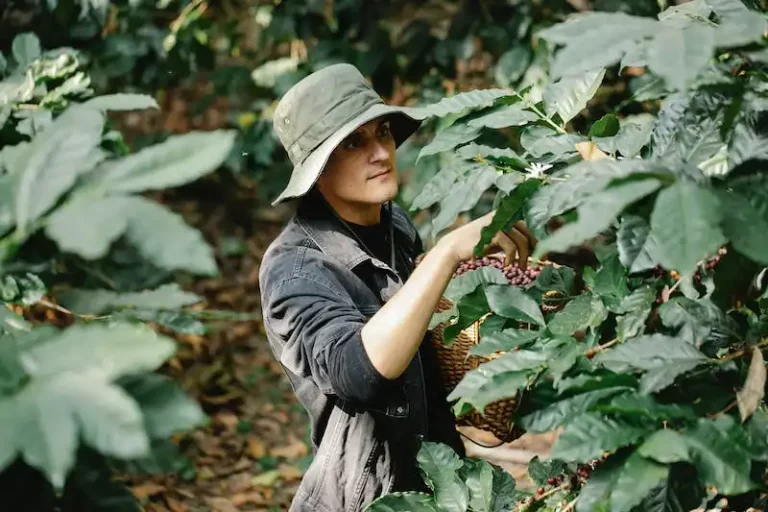When it comes to growing lettuce, it’s important to consider the time and space it needs to mature. Fortunately, there are several companion plants that can be grown alongside lettuce to make the most of your garden’s green space. These neighbors not only offer protection from pests, but also help each other thrive by providing support or attracting beneficial insects.
One great companion plant for lettuce is catnip. This herb not only repels certain pests, but its strong aroma can also mask the scent of lettuce, making it less appealing to pests. Another good companion plant is beans, as they provide vertical support for lettuce and don’t compete for space in the ground. Plus, the nitrogen-fixing ability of beans can improve the soil for both plants.
If you’re looking to add some flavors to your lettuce, consider planting onions or garlic nearby. These alliums not only deter pests, but can also improve the flavor of lettuce when harvested together. Additionally, including herbs like chamomile or parsley can attract beneficial insects that help protect lettuce from pests.
In terms of grouping companion plants together, tomatoes and lettuce make a great pair. Lettuce can benefit from the shade provided by tomato plants, while tomatoes can be protected from pests like the tomato hornworm by the presence of lettuce. Radishes and carrots also work well together, as radishes can help break up the soil for carrots and discourage pests like the carrot fly.
When it comes to selecting the right companion plants for lettuce, it’s important to consider the individual needs and pests of your garden. However, the 10 companion plants mentioned above are some of the most common and widely recommended choices. By including these plants in your garden, you can help encourage healthy growth and deter pests, all while making the most of your available space.
Companion Planting for Lettuce
Finding the right companion plants for lettuce can greatly benefit the growth and flavor of your crops. Lettuce, like many other small plants, can benefit from the powerhouses of certain companion plants. Crops such as beans, cucumbers, and radishes can be great additions to your lettuce garden.
When it comes to finding companion plants for lettuce, it’s good to know which plants grow well together and which ones do not. For example, lettuce grows best when paired with beans, as they help each other by not competing for the same nutrients. In addition, beans grow faster, creating a great support system for the slower-growing lettuce crops.
As a gardener, you may have questions about companion planting for lettuce. One frequently asked question is whether lettuce and cucumbers can be grown together. The answer is yes – not only do they have a good relationship, but the cucumbers can also provide support for the lettuce plants. The same goes for carrots and radishes, which can also be great companions for lettuce.
Another popular companion plant for lettuce is chamomile. Chamomile is not only a beautiful addition to your garden, but it also helps improve the flavor of the lettuce. It repels pests and improves the overall health of the soil, making it an ideal companion for lettuce.
When choosing companion plants for lettuce, it’s important to consider not only the plants that will support its growth but also ones that can provide benefits throughout the entire growing season. Different lettuce varieties have different flavors, so consider planting herbs like dill or basil that complement the taste of your lettuce for a delicious addition to your dinner table.
In addition to the plants mentioned above, there are still many other companion plants that can be beneficial for lettuce. Some examples include beets, parsnips, turnips, and even certain flowers. By experimenting and gaining experience, you can find the perfect companion plants for your lettuce garden and create a harmonious and thriving ecosystem.
What to plant with lettuce to keep bugs away
Growing lettuce in your garden is a great way to enjoy fresh, crisp greens throughout the growing season. However, like many plants, lettuce can be susceptible to pests that can damage its growth and overall health. One way to combat these bugs is by planting companion plants that can help keep them away.
When it comes to lettuce, there are several companion plants that can provide added benefits. These plants can help deter bugs that are known to wreak havoc on lettuce plants, allowing them to grow more efficiently and remain healthier.
One option for companion planting with lettuce is to include onions and chard in the same growing area. Onions have a strong scent that can help repel pests, while chard acts as a physical barrier, obstructing insects from reaching the lettuce plants. Both plants have similar care requirements and will benefit from being grown together.
Another common companion plant for lettuce is radishes. Radishes are a fast-growing crop that can be planted alongside lettuce. They have a strong odor that can deter pests, and their quick growth can help provide some shade for the lettuce plants, keeping them cooler and preventing them from bolting prematurely.
Carrots and parsnips can also be good options for companion planting with lettuce. Carrots are known to attract pests away from lettuce, while parsnips have a similar growth habit and can help shade the lettuce plants. Both plants can be planted alongside lettuce and will benefit from the shared growing area.
Beets and turnips are other choices to consider when planting lettuce. These root crops have a similar growth habit and care requirements as lettuce, making them great companions in the garden. Beets can help repel pests with their strong scent, while turnips can provide shade for the lettuce plants.
If you’re looking for some other companion plant options for lettuce, consider including chamomile, melons, or even nearby towers of legumes. Chamomile can help improve the flavor of lettuce and attract beneficial insects. Melons can provide some shade for lettuce and have a similar watering requirement. Legumes, like peas and beans, can help improve soil quality and provide nitrogen to the growing area.
By having the right companions for your lettuce, you can create a healthier growing environment and deter bugs from damaging your crop. So, gather your favorite companion plants and start planting your lettuce with its best friends!
Lettuce companion plants
When growing lettuce in my garden, I have found that planting it with certain companion plants has many benefits. Companion plants are plants that are grown together with other plants to provide support, protection, or other beneficial relationships.
One of the best companion plants for lettuce is beets. Beets and lettuce have a symbiotic relationship where they can be planted next to each other without competing for space or nutrients. Beets also have a deep taproot that helps break up compacted soil, which can benefit lettuces’ shallow roots.
Hyssop is another companion plant that is great to have near lettuces. Hyssop deters pests like ants and cucumber beetles, which can be harmful to lettuce. Planting hyssop between lettuces can also increase air circulation and provide shade, helping to reduce heat stress on lettuces.
Marigolds are powerhouses when it comes to companion plants, and they offer many benefits for lettuces as well. Marigolds secret naturally occurring insecticides that deter pests like nematodes and aphids. They also attract beneficial insects and pollinators. Planting marigolds near lettuces adds color and beauty to the garden.
Growing garlic near lettuces is also a great method of natural pest control. Garlic deters pests like aphids and rabbits, which can cause damage to lettuces. Planting garlic with lettuces also helps deter certain diseases that can affect lettuce plants.
When it comes to companion plants for lettuces, beans and radishes are good choices. Beans provide support for lettuces as they grow, and radishes help deter pests like flea beetles and hide the lettuces’ scent from pest insects.
Carrots and lettuces are considered “sister” plants, as they grow well together. Carrots help break up the soil, which allows lettuces’ shallow roots to grow more easily. Additionally, carrots can provide some shade to lettuces, helping them withstand the heat.
Tomatoes are another good companion plant for lettuces. Both plants have similar spacing and can be intercropped together. The flavors of tomatoes and lettuces also complement each other well, making them perfect staples for a dinner salad.
Having proper spacing between companion plants is important, as overcrowding can lead to poor air circulation and increased pest and disease problems. By using companion plants, you can create a diverse and healthy garden ecosystem that promotes the growth and well-being of your lettuces.
What Not to grow with lettuce
When it comes to companion planting, the wisdom of planting certain crops together is well-known. Certain plants have relationships that benefit each other, such as repelling pests or providing shade. However, when it comes to lettuce, there are a few plants that are not a good pairing. Here are some plants that you should avoid planting alongside your lettuce:
- Onions: Onions are not a great companion for lettuce, as they both have different growth requirements and onion roots can compete with the shallow root system of lettuce.
- Beans: Beans and lettuce should not be planted together. Beans are well-known for their ability to fix nitrogen in the soil, which can stunt the growth of lettuce plants.
- Carrots: While carrots and lettuce can be planted in the same garden bed, it’s best to keep them a few feet apart. Carrots have deep roots, and if they’re planted too close to lettuce, they can overshadow and stunt the growth of the lettuce plants.
- Marigolds: While marigolds are often used as a companion plant to deter pests, they can actually hinder the growth of lettuce plants. Marigold roots release chemicals that can stunt the growth of nearby plants, including lettuce.
- Cilantro: Cilantro can be a good companion for some plants, but it doesn’t pair well with lettuce. Cilantro can attract pests that may damage lettuce plants, such as aphids or cabbageworms.
- Melons: Melons and lettuce have different watering needs, as melons prefer more water while lettuce prefers a more moderate amount. Additionally, melons can take up a lot of space and can shade out the lettuce plants, hindering their growth.
When planning your garden, it’s important to consider the needs of your plants and how they will interact with each other. While lettuce can be a great companion for many fruits and vegetables, there are certain plants that are not compatible. By avoiding planting lettuce with these crops, you can ensure that your lettuce grows well and remains healthy throughout the growing season.



